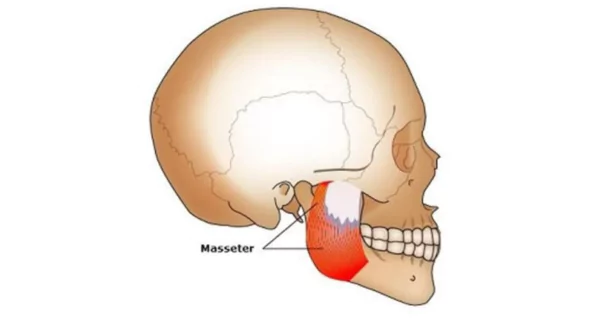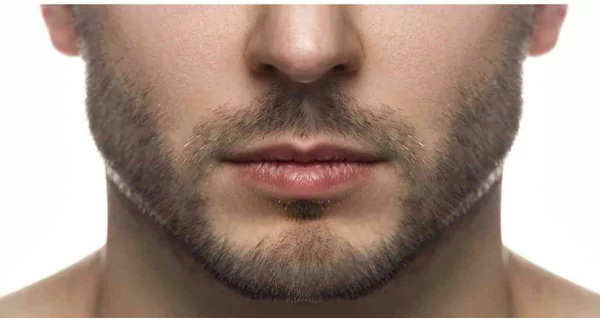Last Updated on: 19th September 2025, 12:36 pm
Discover effective jawline exercises to tone and sculpt your face. Learn techniques, benefits, and tips to achieve a stronger, more defined jawline naturally.
The jawline is often seen as a symbol of beauty and strength, reflecting a youthful and well-defined appearance. However, factors such as genetics, aging, and lifestyle habits can lead to a less pronounced jawline, prompting some to seek ways to enhance this feature. While changes to the face due to genetics or aging are completely natural, there are exercises to help define your jawline.
By working the neck, chin, jaw, and other facial muscles, you can achieve subtle but noticeable changes in your face, such as sharper cheekbones and a more prominent jawline. Jawline exercises, a natural and non-invasive approach, focus on strengthening these muscles. Similar to toning your arms or legs through regular workouts, these exercises target the lower face, improving symmetry and reducing sagging over time.
This article, from a medical perspective, will guide you through the benefits, techniques, and expected results of jawline exercises to help you achieve a stronger, more defined jawline naturally.
Why consider jawline exercises?
Jawline exercises offer much more than just aesthetic improvements. While many people are initially drawn to these techniques for cosmetic reasons, strengthening the muscles of your lower face and neck can provide a range of functional and practical benefits.
1. Aesthetic improvements
A well-defined jawline contributes to a balanced and harmonious facial appearance. It highlights features like the cheekbones and chin, making them appear more proportional. For those dealing with sagging skin or a double chin, these exercises can help tighten and redefine the area.
2. Muscle strengthening
Regularly working out the muscles in your jaw and neck strengthens these areas, helping to lift the skin naturally and prevent sagging, particularly as you age. Stronger muscles provide better support for the overlying skin, contributing to a firmer, more youthful look.
3. Improved symmetry
Over time, unconscious habits like favoring one side of the face while chewing or expressing emotions can lead to minor asymmetry. Jawline exercises target both sides of the face equally, helping to restore and enhance symmetry.
4. Reduction in double chin
By engaging and toning the platysma muscle, a thin sheet that extends from the jawline to the collarbone, and other neck muscles, these exercises help reduce the appearance of a double chin caused by loose skin or excess fat.
5. A natural alternative to surgery
Unlike invasive cosmetic procedures, jawline exercises are entirely natural. They are non-invasive, cost-free, and can be performed easily at home, making them an accessible option for anyone looking to enhance their jawline without the risks or expenses of surgery.
By incorporating jawline exercises into your routine, you not only improve your appearance but also strengthen the underlying muscles, creating lasting benefits that go beyond aesthetics.
The anatomy behind jawline exercises
The jawline’s appearance is influenced by the interplay of bone structure, muscle tone, and skin elasticity. Jawline exercises focus on strengthening specific muscles in the lower face and neck, which not only enhance muscle definition but also improve overall facial tone. Here are the key muscles involved:
- Masseter muscle: This is the main muscle used for chewing, located on both sides of the jaw. Strengthening the masseter can improve jawline definition, as it is one of the most prominent muscles in the lower face.
- Platysma: A thin, sheet-like muscle that extends from the jawline to the collarbone. The platysma supports jaw and neck movement and plays a role in reducing sagging skin under the chin and along the neck.
- Digastric and mylohyoid muscles: Situated beneath the chin, these muscles control the opening of the jaw and help maintain a defined chin. Strengthening them can enhance the contour of the chin and minimize the appearance of a double chin.
By targeting these muscles through jawline exercises, you can improve muscle tone, create a more sculpted appearance, and support the skin’s natural elasticity, all of which contribute to a sharper, more youthful jawline.
7 Jawline Exercises to Try
These exercises are simple, safe, and effective when practiced consistently. Aim to perform them daily or several times a week for the best results.
1. Jawline clench
This exercise is designed to strengthen the masseter muscles and enhance jawline definition. Focus on maintaining proper posture throughout the exercise to ensure the tension is directed toward the jaw muscles and not the neck.
How to do it:
- Sit or stand with a straight back and relaxed shoulders.
- Gently Close your mouth and clench your jaw, feeling the tension in the masseter muscles on both sides of your jaw.
- Hold for 5 seconds, then relax for 5 seconds before repeating.
- Performs this exercise 10-15 times.
2. Chewing motion with gum or resistance
This exercise tones the chewing muscles near the jaw, helping to define the jawline while also improving blood circulation in the area, which promotes overall muscle health. For enhanced results, consider adding mild resistance over time by using a jaw exercise device.
How to do it:
- Chew sugar-free gum or mimic a chewing motion by repeatedly opening and closing your mouth.
- Focus on engaging the muscles near your ears and jaw.
- Continue for 1-2 minutes.
3. Chin lifts
The chin lift exercise is an effective way to target the muscles under the chin and along the jawline, helping to firm and tone this area. Regular practice can improve muscle definition and reduce sagging, contributing to a more sculpted appearance. For best results, ensure you maintain good posture throughout the exercise to avoid neck strain.
How to do it:
- Sit or stand with your back straight and look straight ahead.
- Tilt your head back slightly so you are looking at the ceiling.
- Push your lips forward as if reaching toward the ceiling.
- Hold this position for 5 seconds, feeling the stretch under your chin.
- Relax and repeat 10-15 times.
4. Neck curl-ups
Neck curl-ups, also known as neck crunches, are an effective exercise for strengthening the platysma and other neck muscles, helping to tone the area and reduce the appearance of a double chin.
Since these muscles are rarely used, it’s important to start slowly and stop if you experience any pain. Gradually increase repetitions as your muscles strengthen. Maintaining proper form will ensure the best results and minimize the risk of strain.
How to do it:
- Lie flat on your back with your tongue pressed to the roof of your mouth.
- Gently lift your chin toward your chest, raising your head about 2-3 inches off the ground. Avoid lifting your shoulders.
- Hold briefly at the top, then slowly lower your head back down.
- Repeat the motion 10-15 times, starting with fewer repetitions if needed.
5. Fish face exercise
The fish face exercise is a simple yet effective way to tone the cheek and jaw muscles, promoting a more defined and sculpted lower face. In addition to targeting the jawline, it also engages the cheeks, helping to tone your entire face. For best results, perform this exercise regularly and maintain good posture while doing it.
How to do it:
- Suck your cheeks inward and purse your lips to create a “fish face.”
- Hold this position for 5-10 seconds, feeling the stretch in your cheek and jaw muscles.
- Relax your face and release the position.
- Repeat the exercise 5-10 times.
6. Tongue press
The tongue press exercise is an excellent way to target the neck and jaw muscles, improving muscle tone and overall coordination in the lower face. It’s a simple yet effective exercise that can be done anywhere. To avoid unnecessary strain, keep your face relaxed throughout the exercise and focus on controlled movements.
How to do it:
- Place your tongue firmly against the roof of your mouth, just behind your teeth.
- Press your tongue to fully close the roof of your mouth, creating slight tension.
- While maintaining this position, hum or breathe deeply to activate the muscles.
- Hold the position for 10 seconds, then relax.
- Repeat the exercise 10-15 times, aiming for 3 sets if possible.
7. Ball squeeze under chin
The ball squeeze exercise is a simple and effective way to strengthen the muscles under the chin, reduce sagging, and tighten the jawline. Performing this exercise regularly can help improve definition in the lower face. For optimal results, do this exercise while seated to maintain proper alignment and prevent strain.
How to do it:
- Place a small rubber ball (about 9-10 inches in diameter, similar to a tennis ball) under your chin.
- Press your chin downward to compress the ball, creating tension in the muscles under your chin.
- Hold the compression for 10 seconds, then relax.
Repeat the motion for 8-10 repetitions, completing 3 sets daily if possible.
Tips for maximizing results
To achieve noticeable improvements, consistency and a well-rounded approach are key:
- Stick to a routine: Perform jawline exercises daily or at least 4–5 times a week.
- Combine with a balanced diet: Nutritious foods help reduce facial fat and enhance muscle tone.
- Stay hydrated: Drinking water supports skin elasticity, boosting the impact of exercises.
- Improve posture: Good posture enhances jawline definition and prevents sagging.
- Include full-body workouts: General fat loss through regular exercise makes your jawline more prominent.
Incorporate these tips alongside your exercises for the best results.
How long does it take to see results?
With regular practice, subtle changes may appear in 4–8 weeks, while noticeable improvements in muscle tone and definition typically require 3–6 months. Results vary based on age, genetics, and consistency.
Are jawline exercises scientifically backed?
Facial exercises, including jawline exercises, have gained attention in recent years for their potential to improve facial muscle tone. Studies suggest that consistent facial exercises can enhance muscle strength, reduce signs of aging, and improve overall appearance.
While jawline exercises may not replace professional treatments for everyone, they are a natural, low-risk method for achieving subtle but meaningful changes.
The role of genetics in jawline definition
Genetics largely determine your jawline’s natural shape and definition, including factors like bone structure, fat distribution, and skin elasticity.
While exercises can enhance muscle tone, they cannot change your genetic traits. A prominent jawline often stems from a strong mandible, while excess fat or reduced skin elasticity can obscure it.
Combining jawline exercises with a healthy diet, overall fat reduction, and good skincare can optimize results, but understanding family genetics helps set realistic expectations.
Common mistakes to avoid with jawline exercises
To get the best results and prevent strain, practice jawline exercises correctly by avoiding these common mistakes:
- Overdoing it: Stick to recommended repetitions to avoid muscle fatigue or soreness.
- Using incorrect techniques: Improper form reduces effectiveness and may cause unnecessary tension in the neck or shoulders.
- Ignoring posture: Maintain an upright, relaxed position to engage the right muscles.
- Neglecting overall health: Combine exercises with a healthy diet, proper hydration, and sufficient sleep for optimal results.
By following proper techniques and a holistic approach, you can maximize benefits while minimizing risks.
Jawline exercises vs. other options: which is right for you?
Jawline exercises are a natural, non-invasive way to enhance your appearance, but they’re not the only option. Here’s how they compare to other methods:
- Cosmetic procedures: Treatments like fillers, Botox, or liposuction offer quick, dramatic results but are costly, carry risks, and require upkeep. Exercises are free and safe when done properly.
- Skincare products: Anti-aging products improve skin elasticity and reduce sagging, complementing exercises by focusing on the skin rather than the muscles.
- Lifestyle changes: Weight loss through diet and exercise reduces facial fat, and jawline exercises add targeted toning for enhanced definition.
Which should You choose?
Jawline exercises are a great, natural starting point for enhancing your appearance, offering a safe and cost-free option. For those seeking faster or more dramatic results, cosmetic procedures such as fillers or liposuction might be worth considering after consulting a trained professional.
However, the most sustainable and effective approach combines jawline exercises with good skincare and healthy lifestyle habits, ensuring both immediate and long-term benefits.
Jawline exercises offer an easy and affordable way to enhance facial definition and symmetry naturally. With consistent practice and a commitment to a healthy lifestyle, these exercises can help you achieve a stronger, more sculpted jawline over time.
Patience is key—visible results won’t happen overnight, but staying dedicated to your routine will yield improvements. If you encounter discomfort or have concerns about your jaw health, it’s important to seek advice from a healthcare professional. Start your journey to a defined jawline today by incorporating these exercises into your daily routine!
Frequently Asked Questions
Can anyone do jawline exercises?
Do jawline exercises help with a double chin?
How often should I perform jawline exercises?
Can jawline exercises cause soreness?
Do jawline exercises work for everyone?
Share
References
1. Goldman, R. (2023, april 21). 5 Exercises for a Defined and Muscular Jawline. Healthline. https://www.healthline.com/health/fitness-exercise/jawline-exercises
2. Hwang, U. J., Kwon, O. Y., Jung, S. H., Ahn, S. H., & Gwak, G. T. (2018, january 20). Effect of a Facial Muscle Exercise Device on Facial Rejuvenation. Aesthetic surgery journal, 38(5), 463–476. https://doi.org/10.1093/asj/sjx238
3. Lim, H. W. (2021, december). Effects of Facial Exercise for Facial Muscle Strengthening and Rejuvenation: Systematic Review. The Journal Of Korean Physical Therapy, 33(6), 297-303. https://doi.org/10.18857/jkpt.2021.33.6.297
4. Radhakrishnan, R. (2021, may 21). Do jawline exercises work? MedicineNet. https://www.medicinenet.com/do_jawline_exercises_work/article.htm
5. WebMD Editorial Contributor. (2022, december 10). Best Exercises for a Defined Jawline. WebMD. https://www.webmd.com/fitness-exercise/best-exercises-defined-jawline
-
Nayibe Cubillos M. [Author]
Pharmaceutical Chemestry |Pharmaceutical Process Management | Pharmaceutical Care | Pharmaceutical Services Audit | Pharmaceutical Services Process Consulting | Content Project Manager | SEO Knowledge | Content Writer | Leadership | Scrum Master
View all posts
A healthcare writer with a solid background in pharmaceutical chemistry and a thorough understanding of Colombian regulatory processes and comprehensive sector management, she has significant experience coordinating and leading multidisciplina...





















